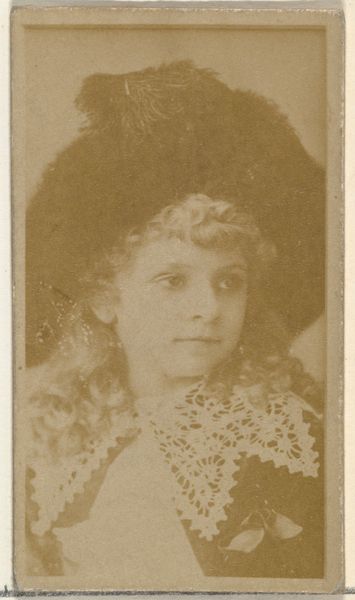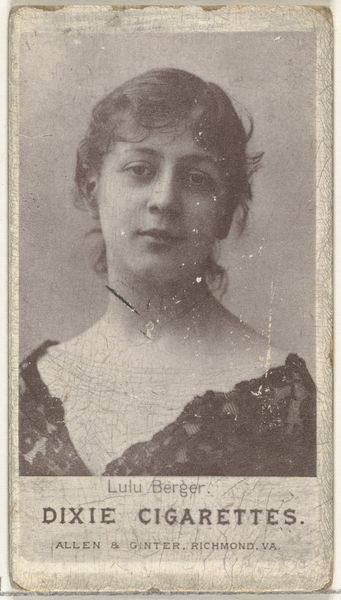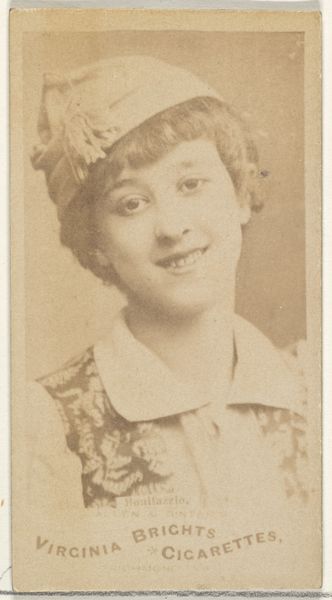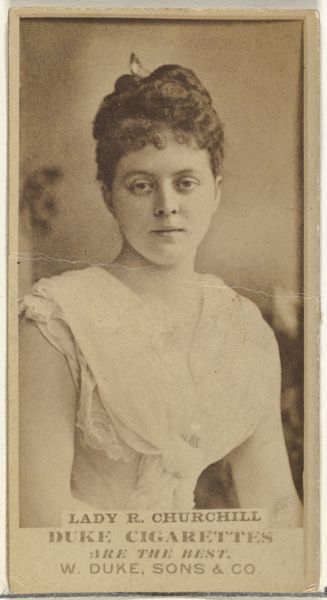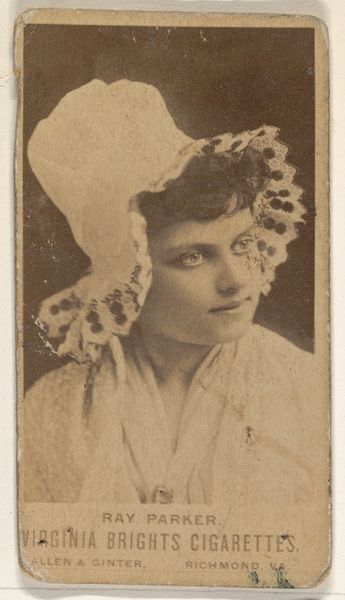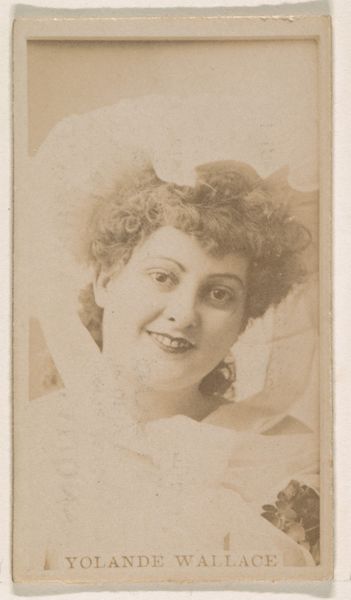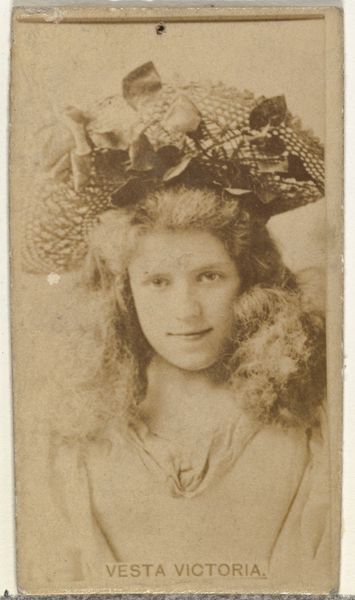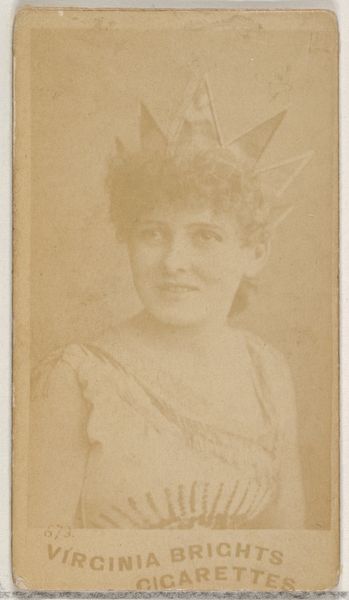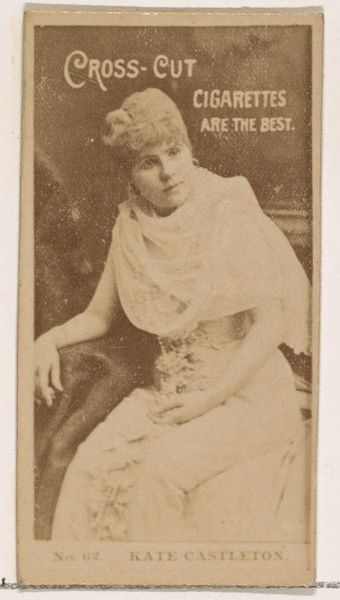
Mlle. Thoringny, from the Actors and Actresses series (N145-8) issued by Duke Sons & Co. to promote Duke Cigarettes 1890 - 1895
0:00
0:00
print, photography
#
portrait
# print
#
photography
#
japonisme
Dimensions: Sheet: 2 11/16 × 1 3/8 in. (6.8 × 3.5 cm)
Copyright: Public Domain
Curator: This is "Mlle. Thoringny," a trade card likely produced between 1890 and 1895 by W. Duke, Sons & Co. as part of their Actors and Actresses series to promote Duke Cigarettes. It now resides in the collection of the Metropolitan Museum of Art. Editor: My first thought is how much the image itself resembles a staged portrait; her sideways glance feels coquettish, despite the slightly faded quality of the photography. It’s undeniably charming in an old-world sort of way. Curator: These cards offer fascinating insights into the public roles of actresses at the time. Duke Cigarettes, like many tobacco companies, used celebrity endorsements as a key marketing strategy. Presenting actresses as refined and desirable figures directly linked them to the pleasure of smoking. Editor: Absolutely, and framing the actress's image with decorative Japanese fans connects to the aesthetic trend of Japonisme. The cross-promotion reveals a lot about cultural hierarchies, gender roles, and class aspirations being peddled at that moment. Were these actresses simply endorsing a product or actively shaping narratives around smoking and sophistication? Curator: Exactly. By distributing these cards widely, Duke Cigarettes made Mlle. Thoringny accessible to a broader public, but within very specific parameters. It's worth questioning the agency Mlle. Thoringny had in all of this. Was she being celebrated, objectified, or both? Editor: I am especially intrigued by the convergence of celebrity culture, commerce, and the then-nascent world of mass media. It also makes you consider what kind of health advocacy messages, if any, were provided during this time and the marketing approaches implemented around their cultural products. Curator: Right. The absence of public health concerns in these promotional materials underscores the prevailing societal attitudes toward smoking, the dynamics between actresses as marketing tools and smoking as glamour. This print serves as an artifact of a world grappling with emergent mass culture and its inherent power structures. Editor: Yes, it reminds us that every image carries social meaning, whether explicitly intended or subtly embedded. It prompts reflection on whose stories are amplified. Curator: Agreed. A small cigarette card of an actress, when carefully considered, can speak volumes about the social history, not only the aesthetics, of its era.
Comments
No comments
Be the first to comment and join the conversation on the ultimate creative platform.
